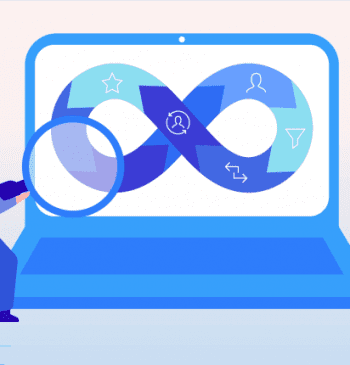07 Aug

Today’s business powered by SaaS prompted a revolution in B2B by integrating multiple channels and shifting multiple channels to an omnichannel landscape. Integration of loyalty programs into channel management software led to amazing solutions regarding B2B omnichannel customer loyalty. Cutting-edge software like Apex Loyalty enabled a seamless B2B omnichannel journey and made a holistic brand strategy possible.
Regarding B2B, your challenge is more than dealing with omnichannel customer loyalty. It is more than numbers, and you have more than one type of customer. Apex Loyalty segmentation enables personalization for all kinds through the multilayers of omnichannel customer loyalty. With Apex Loyalty, a B2B loyalty program can treat your customers personally, as if they were getting services as B2C customers.
From Mono to Omnichannel
The evolution of business, especially in retail, started from the mono channel to multichannel, later to become omni-channels. When there was physically one store to sell from, things were simpler. When the internet entered our lives, brands included various channels to their businesses, leading to multi-channels. Multi channels include separate entities like online and mobile domains, which operate independently. This means customers can reach your product through multiple domains. However, this brings a challenge.
As much as multichannel systems comprise a core model with additional domains, you still rely on a single look to the customer side as part of your brand loyalty efforts. This draws the focal point of customer-centric marketing instead of focusing solely on sales through many channels. The concept of omnipresence, here, becomes essential in the B2B omnichannel customer loyalty context, including all parties, not only end buyers. The need for holistic channel knowledge representing your brand across all touchpoints emerges. With the advances in information and communication technologies, a seamless buying experience is now possible.
Building the Single-View
A modern approach integrates these separate, competing channels by blending them into a whole. As a Latin word meaning “all,” “Omni” discusses a unified brand look in the B2B context. The essence of various research converges on the notion that it’s about the integrated buying experience. This not only involves the physical domains such as stores but also enhances them with data derived from online domains. A complete approach fueled with digital knowledge enables you to construct a seamless brand experience for customers through omnichannel customer loyalty.
Interaction for Integration Across Channels
What makes omnichannel customer loyalty different than a group of channels operating here and there? With omni-channels, independent domains exist within a strategy. Customers, both within and without the channel, experience a single brand presence. The distinguishing factor in omnichannel environments is that its foundation is “interaction.” Any touchpoint within the omnichannel enables the customer to communicate consistently with the brand. Putting it another way, once the customer faces your brand, regardless of where they are, they will interact with it in a personalized manner that would otherwise not happen in the conventional channel models.
As much as the whole B2B omnichannel customer loyalty landscape suggests a high level of interaction, the challenge is undeniable. The necessity to adopt a fresh mindset put aside; there are technical requirements to add to your core business model. We better call it “designing your omnichannel” with the knowledge from your multichannel state. For effective modification, you need to study your channel thoroughly. Let’s all take a second and think: How does your channel use your digital and physical domains? Is there a pattern to that? If yes, do you think it is relevant to your customers’ purchasing decisions?
Designing your B2B Omnichannel Customer Loyalty Strategy
This pattern reading makes the most sense in your modification process’s B2B omnichannel customer loyalty aspect. Loyalty, without a doubt, is an integral part of this revolution in the B2B ecosystem. Academic research highlights the essentials of omnichannel design as consistency in channel knowledge and information and seamless cross-channel experience. Loyalty strategies are coherent with the consumer-centric design, after all.
How do you overcome the prospective conflicts in familiarizing customers with omnichannel dynamics? This brings the significance of optimization before adding more channels to your ecosystem because growing smart is way more important than a gigantic spread. What are the potential difficulties that would come your way?
As much as we are now aware of the importance of a unified look within an omni-channel, knowing is one thing, and practicing it is a whole other world. Recent studies suggest the biggest obstacle for brands is not knowing how to serve their channel effectively in a “relevant” way. One major reason behind this is not having the tools to target customer needs, both existing and future ones. This brings us to the importance of targeted content.
Apex Loyalty to Boost B2B Omnichannel Customer Loyalty
Apex Loyalty dynamic rules help you narrow all the omnichannel customer loyalty knowledge and patterns into meaningful, targeted content. With this content, you can tailor campaigns for individual segments and derive real customer insights. With Apex Loyalty, we do not utilize the content “born out of the very content” only for marketing material but also for channel education. Using loyalty to educate will contribute to your omnipresence. And in return, omnipresence will boost your loyalty all across your touchpoints.
You can read our previous post on https://www.apexloyalty.com/how-to-improve-customer-retention-strategy/











